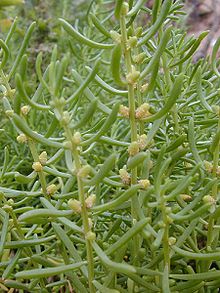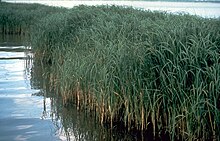Yes, Quite

Indubitably
Sunday, January 8, 2012
5 Common Animals of the Estuaries
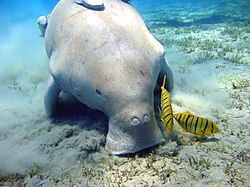 Dugong (Dugong dugon)
Dugong (Dugong dugon) Irrawaddy Dolphins (Orcaella brevirostris)
Irrawaddy Dolphins (Orcaella brevirostris)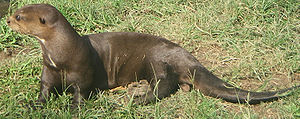 Giant Brazilian Otter (Pteronura brasiliensis)
Giant Brazilian Otter (Pteronura brasiliensis) Mud Crab (Scylla serrata)
Mud Crab (Scylla serrata)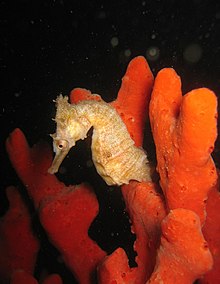 New Holland seahorse ( (Hippocampus whitei)
New Holland seahorse ( (Hippocampus whitei)Tuesday, January 3, 2012
Limiting Factors
Density-Dependent:
1. One example would be the food and water supply of most of the birds in estuaries. Only so much food and water can be produced, and based on the density of animals, so may die off because there is not enough food to allow them to survive.
2. Another example would be disease. If a fish gets a disease, if the water flow is very populated, then it's more likely that the disease will spread, because there is more interactions happening.
Density-Independent:
1. The temperature of an estuary is a density independent factor. No matter how many fish there are, some fish can not survive because the water is too cold, or too hot.
2.Another would be natural disasters. If a hurricane came into an estuary, It would be a threat to wildlife, not matter how much there was.
1. One example would be the food and water supply of most of the birds in estuaries. Only so much food and water can be produced, and based on the density of animals, so may die off because there is not enough food to allow them to survive.
2. Another example would be disease. If a fish gets a disease, if the water flow is very populated, then it's more likely that the disease will spread, because there is more interactions happening.
Density-Independent:
1. The temperature of an estuary is a density independent factor. No matter how many fish there are, some fish can not survive because the water is too cold, or too hot.
2.Another would be natural disasters. If a hurricane came into an estuary, It would be a threat to wildlife, not matter how much there was.
Interesting Fact
There are 102 estuaries in the U.S according to the EPA. Of these, 28 have been designated by their states and the federal government to be of national importance.
Environmental Damage
Increasing pressures from human-induced activities are causing habitat loss and degradation, fisheries declines, and overall reductions in estuarine health and productivity. Associated physical alterations, such as dredging, damming, and bulkheading, change the natural flow of fresh water to estuaries, dramatically affecting water quality. Toxic substances and excess nutrients contribute to fish diseases, algal blooms, and low dissolved oxygen and can pose a threat to the health of humans and estuarine wildlife. Because of this drop of wildlife, humans could lose needed areas for fishing, healthy drinking water, or good soil to grow crops. With such pollutants, humans could lose what they desperately need to survive.
Eco - tourism
1.They are the nurseries of the oceans. Many species may spawn there and many other species may live portions of their lives in estuaries.
2.The higher salinity of an estuary helps protect some young creatures from predators.
3.Estuaries, especially mangrove areas really do a lot of cleansing. Mangrove leaves start to decay on the tree before they fall off. Once they hit the water they
break down and are the basis of many marine food chains. Thus they are one of the most beneficial systems.
4.Grass flats also produce food. At any one time, there could be millions of tons of sea-grasses floating on the gulf stream or settling on reefs all along the east coast. Fuelling many food webs.
5. They are the cradle of the sea, and the most fragile areas too. Just one storm-water project 50 years ago, has been determined to have killed 4 bays at the mouth of this watershed. Too much freshwater upset the delicate balance of the salinity in the estuaries and they "died".
2.The higher salinity of an estuary helps protect some young creatures from predators.
3.Estuaries, especially mangrove areas really do a lot of cleansing. Mangrove leaves start to decay on the tree before they fall off. Once they hit the water they
break down and are the basis of many marine food chains. Thus they are one of the most beneficial systems.
4.Grass flats also produce food. At any one time, there could be millions of tons of sea-grasses floating on the gulf stream or settling on reefs all along the east coast. Fuelling many food webs.
5. They are the cradle of the sea, and the most fragile areas too. Just one storm-water project 50 years ago, has been determined to have killed 4 bays at the mouth of this watershed. Too much freshwater upset the delicate balance of the salinity in the estuaries and they "died".
Sunday, January 1, 2012
Ecological succession in Estuaries
First, I think it's important to define primary and secondary ecological succession:
Primary succession is the series of community changes which occur on an entirely new habitat which has never been colonized before. For example, a newly quarried rock face or sand dunes.
Secondary succession is the series of community changes which take place on a previously colonized, but disturbed or damaged habitat. For example, after felling trees in a woodland, land clearance or a fire.
Primary succession is the series of community changes which occur on an entirely new habitat which has never been colonized before. For example, a newly quarried rock face or sand dunes.
Secondary succession is the series of community changes which take place on a previously colonized, but disturbed or damaged habitat. For example, after felling trees in a woodland, land clearance or a fire.
For example, in estuaries, primary succession is shown when a small plant begins to sprout on a moist rock, and the roots slowly break this rock and turn it into a more fertile area. Or, a small seed floating in the brackish area, and then landing on a small island area not to far out from the coast, and growing there on this previously uninhabited land.
For secondary succession, this could be shown by a hurricane coming i to an already fertile estuary, destroying most of the plants and animals, and then other organisms come to re-populate the already fertile area.
Subscribe to:
Comments (Atom)

